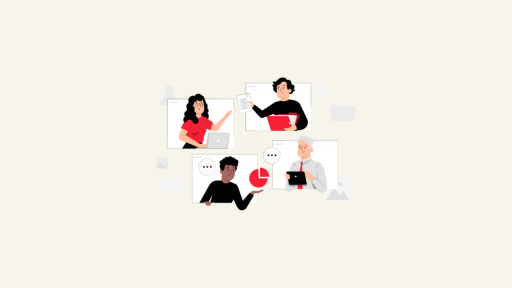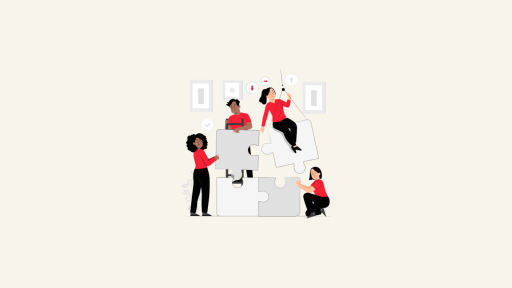
In today’s dynamic professional environment, the onboarding process is a crucial cornerstone in the journey of every new employee. Far beyond the mere completion of paperwork, effective onboarding serves as the gateway to organizational culture, fostering engagement and accelerating integration into new roles. In this comprehensive guide, we embark on a journey to demystify the intricacies of the onboarding process, shedding light on its main stages and unveiling the strategic elements that contribute to a successful and enriching onboarding experience.
Join us in unraveling the layers of onboarding as we navigate through the preparatory measures, the orientation and introduction phase, paperwork and compliance essentials, training and skill development initiatives, integration into teams for a sense of belonging, and the continuous feedback loops that ensure a harmonious and evolving employee journey.
Preparing for Arrival
A well-structured onboarding begins with thorough preparation before a new employee enters the office or starts remote work. This stage involves coordinating logistics, such as securing a workspace, setting up the necessary equipment, and ensuring that essential documents are ready for the new hire’s arrival. Let’s delve deeper into each stage of the onboarding process:
Workspace Setup:
- Desk and Equipment: Ensure the new employee has a designated desk or workspace. Set up and organize the workstation with essential equipment such as a computer, phone, keyboard, mouse, and other tools specific to their role.
- Supplies: Stock the workspace with necessary office supplies, including pens, notepads, and any specialized tools or equipment required.
Technology Readiness:
- Computer Systems: Confirm that the computer systems are operational and properly configured with the necessary software and access permissions.
- Email and Communication Tools: Set up the new employee’s email account and provide access to communication tools such as instant messaging platforms or collaboration software.
Access and Security:
- Building Access: If applicable, arrange for building access cards or keys and ensure the new employee is familiar with entry procedures.
- IT Security: Review cybersecurity protocols and ensure the new hire knows the best practices for safeguarding company information.
Documentation Preparation:
- Employment Contracts: Prepare and review the contract, ensuring all terms and conditions are clear.
- Company Policies: Compile and provide the new employee with documentation outlining the company’s policies, including the employee handbook, code of conduct, and other relevant guidelines.
Welcome Kit:
- Welcome Letter: Create a personalized welcome letter that expresses excitement about the new employee joining the team. Include important details such as the first day’s schedule and key personnel’s contact information.
- Company Swag: Consider providing company-branded items, such as a t-shirt, mug, or notepad, as a gesture of welcome and to help the new hire feel a sense of belonging.
Logistical Support:
- Travel Arrangements: If the new employee is relocating, assist with travel arrangements, accommodation, and any other logistical details.
- Orientation Schedule: Provide a detailed schedule for the first day, outlining the agenda, meetings, and any training sessions planned.
By meticulously addressing these aspects in the “Preparing for Arrival” stage, the organization ensures that the new employee experiences a smooth and well-coordinated onboarding process from the moment they step through the door or start their remote work. This level of preparation sets a positive tone for the new hire’s initial days and contributes to a seamless integration into the company.

Orientation and Introduction
The first day is often dedicated to a comprehensive orientation and introduction session. During this stage, new employees learn about the company’s mission, values, and overall culture. They are introduced to their team members, key stakeholders, and the organizational structure. This initial encounter lays the foundation for a sense of belonging and alignment with the company’s goals.
Here’s a more detailed breakdown of the key components within this stage:
Company Overview:
- Mission and Vision: Provide a comprehensive overview of the company’s mission and vision. Emphasize the organization’s core values and how they align with the employee’s role.
- History and Background: Share the history and background of the company, including key milestones, achievements, and any significant events that have shaped its identity.
Team Introduction:
- Welcome Session: Conduct a formal welcome session, possibly led by top executives or key leaders within the organization. This session sets a positive tone for the new employee’s journey.
- Icebreaker Activities: Incorporate icebreaker activities to encourage team members to introduce themselves, fostering a friendly and inclusive atmosphere.
Facility Tour:
- Physical Workspace: Take the new employee on a guided tour of the physical workspace, highlighting key areas such as workstations, meeting rooms, breakrooms, and other facilities.
- Introduction to Amenities: Familiarize the employee with amenities such as restrooms, kitchen facilities, and recreational areas to enhance their overall workplace experience.
Introduction to Company Culture:
- Culture and Values: Explore the company’s culture by discussing shared values, norms, and the overall work environment. Highlight the importance of teamwork, innovation, and any unique cultural aspects.
- Dress Code and Etiquette: Clarify any dress code expectations and workplace etiquette, ensuring the new hire feels comfortable navigating the cultural nuances.
Introduction to Team Members:
- Individual Introductions: Facilitate individual introductions with team members, including immediate colleagues, supervisors, and key stakeholders.
- Organizational Structure: Provide an overview of the organizational structure, explaining reporting lines and how different teams collaborate within the company.
Initial Goals and Expectations:
- Role Expectations: Clearly communicate the expectations for the new employee’s role, including responsibilities, performance metrics, and any specific objectives.
- Performance Standards: Discuss performance standards, emphasizing the importance of open communication and feedback throughout their tenure.
Cultural Onboarding Activities:
- Welcome Lunch or Gathering: Organize a welcome lunch or informal gathering to allow the new employee to connect with team members in a relaxed setting.
- Company Traditions: Introduce any company traditions or rituals integral to the workplace culture, helping employees feel a sense of belonging.
By meticulously addressing these aspects in the “Orientation and Introduction” stage, the organization lays the groundwork for a positive and inclusive onboarding experience. This phase imparts essential information and fosters a sense of connection and alignment with the company’s values and objectives.
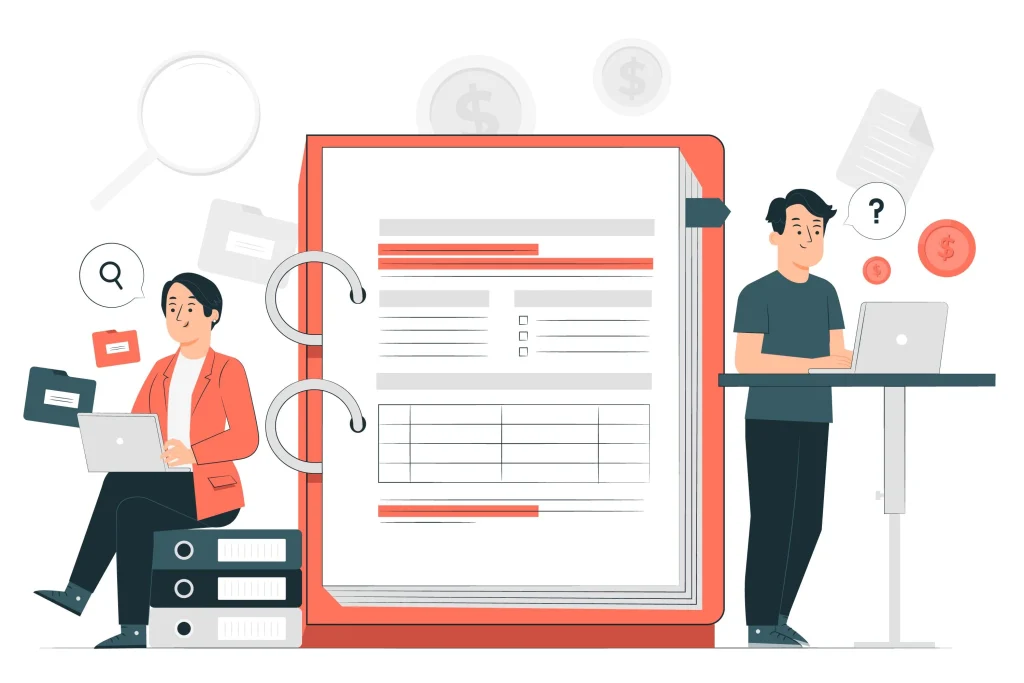
Paperwork and Compliance
While perhaps the less glamorous aspect of onboarding, handling paperwork and ensuring legal compliance is a critical stage. New hires complete necessary forms, including tax documents, benefits enrollment, and company policies. This stage streamlines administrative processes and helps establish a clear understanding of expectations and responsibilities.
The “Paperwork and Compliance” stage is a critical component of the onboarding process, focusing on ensuring that all necessary documentation is completed and that the new employee understands and adheres to the legal and organizational requirements. Here’s a more detailed breakdown of the key components within this stage:
Document Completion:
- Tax Forms: Assist the new employee in completing tax-related documentation, including the W-4 form for federal income tax withholding and state-specific tax forms.
- Direct Deposit Setup: Guide setting up direct deposit for the new hire’s salary, ensuring a seamless payroll process.
- Emergency Contact Information: Collect and verify emergency contact information to have a record in case of unforeseen circumstances.
Benefits Enrollment:
- Health Insurance: Facilitate the enrollment process for health insurance benefits, providing detailed information on coverage options, premiums, and any additional wellness programs.
- Retirement Plans: If applicable, guide the employee through enrolling in the company’s retirement plans, such as 401(k) or pension programs.
- Other Employee Benefits: Communicate information about other benefits such as life insurance, disability coverage, and any additional perks the organization offers.
Review of Company Policies:
- Employee Handbook: Provide the new employee with a copy of the employee handbook, which outlines company policies, rules, and regulations.
- Code of Conduct: Review the company’s code of conduct, emphasizing the expected behavior and ethical standards in the workplace.
- Confidentiality Agreements: Discuss and have the employee sign any confidentiality agreements or non-disclosure agreements necessary for their role.
Legal Compliance:
- Work Authorization Verification: Ensure the new employee’s work authorization documentation is collected and verified in compliance with legal requirements.
- Anti-Discrimination Policies: Review anti-discrimination policies to create awareness and ensure employees understand their rights and responsibilities in promoting a diverse and inclusive workplace.
Safety and Security Protocols:
- Safety Training: Provide information on workplace safety protocols, emergency procedures, and the location of safety equipment such as fire exits and first aid kits.
- IT Security Training: Educate the new hire on IT security best practices, including password policies and data protection measures to safeguard company information.
Acknowledgment and Signature Collection:
- Documentation Acknowledgment: Have the new employee acknowledge receipt and understanding of important documents by signing and dating relevant forms.
- Record Keeping: Establish a systematic method for securely storing and maintaining employee records in compliance with privacy and data protection regulations.
Compliance Training:
- Training Programs: If required, schedule and conduct compliance training sessions to ensure that employees are familiar with industry-specific regulations and standards.
- Continuous Updates: Communicate the importance of staying informed about policy updates and undergoing periodic compliance training as necessary.
By meticulously addressing these aspects in the “Paperwork and Compliance” stage, the organization meets legal requirements and sets clear expectations and guidelines for the new employee, contributing to a smooth and compliant onboarding process.

Training and Skill Development
A pivotal onboarding stage is providing employees with the tools and knowledge they need to excel in their roles. Training sessions may cover job-specific skills, company-specific software, and general professional development opportunities. This ensures that new hires have the skills and knowledge required to contribute effectively to their teams.
The “Training and Skill Development” stage in the onboarding process is focused on equipping new employees with the knowledge, skills, and tools they need to excel in their roles. Here’s a more detailed breakdown of the key components within this stage:
Job-Specific Training:
- Role Overview: Provide a detailed overview of the new employee’s role, including key responsibilities, tasks, and expectations.
- Job-specific Processes: Outline specific processes and workflows relevant to the employee’s position, ensuring a clear understanding of how their tasks contribute to the organization’s overall objectives.
Company-Specific Software and Tools:
- Software Training: Conduct training sessions on any proprietary software, tools, or platforms used within the company. This may include project management tools, communication platforms, and industry-specific software.
- Access and Permissions: Ensure the new employee has the necessary access and permissions to use relevant software and tools for their job functions.
Professional Development Opportunities:
- Training Programs: Communicate available training programs and resources for ongoing professional development. This may include both internal training sessions and external courses relevant to the employee’s career growth.
- Skill Enhancement: Encourage employees to identify specific skills they would like to enhance and provide support in accessing resources or training programs to achieve those goals.
Mentorship and Coaching:
- Mentor Introduction: Introduce the new hire to their assigned mentor or coach, if applicable. Clarify the mentor’s role in providing guidance, support, and facilitating the employee’s integration into the organization.
- Regular Check-ins: Establish a schedule for regular check-ins between the new employee and their mentor, fostering a continuous learning environment.
Team Collaboration Training:
- Communication Protocols: Educate the employee on communication channels and protocols within the team and organization. This includes email etiquette, meeting procedures, and any collaborative platforms in use.
- Team Dynamics: Provide insights into team dynamics, emphasizing the importance of collaboration, effective communication, and the value of diverse perspectives.
Product or Service Knowledge:
- Product Training: If applicable, ensure that the new employee has a comprehensive understanding of the company’s products or services. This is especially important for roles that involve direct interaction with customers or clients.
- Market and Industry Knowledge: Provide context on the company’s position in the market and industry trends, helping the employee understand the broader context of their work.
Performance Expectations:
- Key Performance Indicators (KPIs): Clearly communicate the key performance indicators (KPIs) that will be used to evaluate the employee’s performance. Discuss expectations and set realistic goals for the initial weeks and months.
Feedback Mechanisms:
- Feedback Sessions: Establish an open feedback culture, encouraging regular feedback sessions between the new employee and their supervisor or team lead. Provide constructive feedback to help them grow in their role.
By meticulously addressing these aspects in the “Training and Skill Development” stage, the organization not only ensures that the new employee is well-prepared for their role but also sets the foundation for continuous learning and growth within the company. This approach contributes to employee satisfaction and long-term success within the organization.
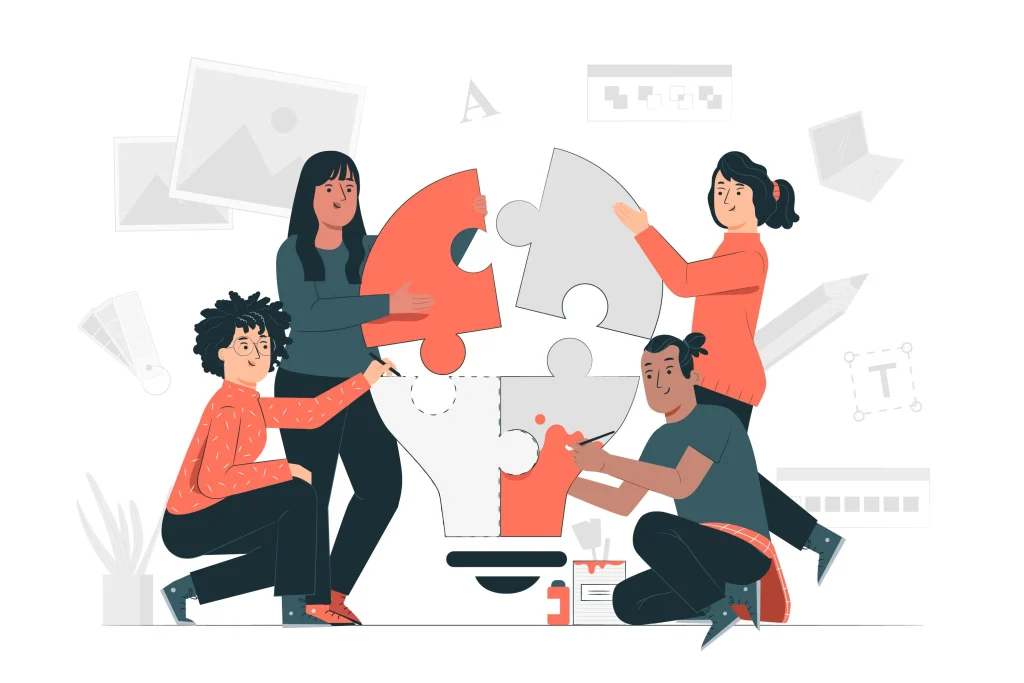
Integration into Teams
Successful onboarding involves integrating new hires seamlessly into their teams and fostering positive working relationships. Team-building activities, mentorship programs, and regular check-ins facilitate a sense of camaraderie and collaboration, enabling new employees to feel connected and supported.
The “Integration into Teams” stage is crucial for fostering a sense of belonging, collaboration, and camaraderie within the organization. This stage focuses on ensuring that new employees become seamlessly integrated into their teams and the broader company culture. Here’s a more detailed breakdown of the key components within this stage:
Team-building Activities:
- Introduction Sessions: Organize team-building sessions to help new employees get to know their colleagues on a personal level. This can include icebreaker activities, team-building games, or informal gatherings.
- Shared Experiences: Encourage shared experiences that go beyond work-related tasks, fostering a sense of camaraderie and teamwork.
Mentorship Programs:
- Assigned Mentors: If not introduced during the orientation stage, assign mentors to new employees to provide guidance, support, and assistance in navigating the company culture.
- Regular Mentorship Meetings: Establish a schedule for regular mentorship meetings to allow for open communication and a platform for the new hire to seek advice and insights.
Team Dynamics:
- Team Structure: Provide a detailed overview of the team structure, roles, and responsibilities of team members. Ensure that the new employee understands how their role contributes to team goals and overall company objectives.
- Collaboration Platforms: Familiarize the employee with collaboration tools and platforms used within the team for effective communication and project management.
Cross-functional Collaboration:
- Introduction to Other Departments: Facilitate introductions to members of other departments with whom the new employee may interact. Encourage cross-functional collaboration to broaden their understanding of the company’s operations.
- Collaborative Projects: If possible, involve the new hire in collaborative projects that require teamwork across different departments.
Team Norms and Communication:
- Communication Norms: Discuss team communication norms, including preferred communication channels, meeting schedules, and expectations for responsiveness.
- Feedback Culture: Emphasize the importance of a feedback culture within the team, encouraging both giving and receiving constructive feedback.
Social Integration:
- Team Lunches or Events: Organize team lunches, happy hours, or social events to provide opportunities for informal interactions and bonding outside of the typical work setting.
- Social Platforms: If applicable, introduce the new employee to any internal social platforms or groups where team members share non-work-related interests and activities.
Recognition and Appreciation:
- Acknowledgment of Contributions: Encourage a culture of recognition by acknowledging and appreciating the contributions of team members. This could be through formal recognition programs or informal expressions of gratitude.
- Celebration of Milestones: Celebrate team and individual milestones to strengthen the group’s sense of achievement and unity.
Regular Check-ins and Support:
- Scheduled Check-ins: Establish a schedule for regular check-ins with team members, team leads, or supervisors to monitor the new employee’s progress and address any challenges.
- Support Systems: Ensure the new hire knows support systems within the team and organization, such as HR contacts or employee assistance programs.
By meticulously addressing these aspects in the “Integration into Teams” stage, the organization helps new employees feel connected, valued, and supported within their teams. This integration process contributes to a positive work environment and facilitates a smooth transition into the organizational culture.
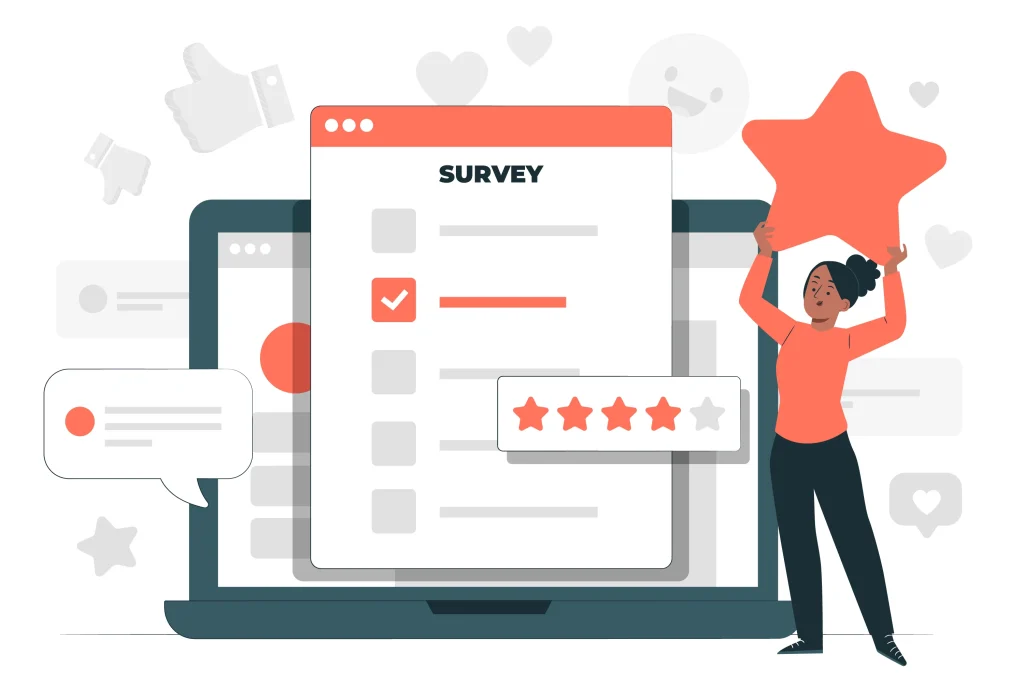
Continuous Feedback and Adjustment
The onboarding process doesn’t end after the first few weeks. Continuous feedback mechanisms and regular check-ins help gauge the new hire’s progress and satisfaction. Based on feedback, adjustments can be made to enhance the onboarding experience and address any concerns or challenges.
The “Continuous Feedback and Adjustment” stage in the onboarding process focuses on maintaining an ongoing dialogue between the new employee and the organization. This stage is crucial for addressing any concerns, ensuring continuous improvement, and facilitating the new hire’s long-term success. Here’s a more detailed breakdown of the key components within this stage:
Feedback Sessions:
- Regular Check-ins: Schedule regular one-on-one check-in meetings between the new employee and their supervisor or team lead. These sessions provide a platform for discussing progress, addressing concerns, and providing constructive feedback.
- Feedback Surveys: Implement periodic feedback surveys to gather insights from the new hire about their onboarding experience, team dynamics, and overall satisfaction.
Performance Reviews:
- Initial Performance Review: Conduct an initial performance review after the first few weeks or months, focusing on achievements, areas for improvement, and aligning goals with organizational objectives.
- Ongoing Performance Reviews: Establish a schedule for regular performance reviews to assess progress, set new goals, and provide opportunities for career development discussions.
Adjustments Based on Feedback:
- Adaptation of Training: Use feedback received during the onboarding process to adapt and improve training programs. This ensures that future hires benefit from adjustments made based on previous experiences.
- Process Refinement: If common concerns or challenges arise, consider refining onboarding processes to address recurring issues and enhance the overall onboarding experience.
Career Development Discussions:
- Long-Term Goals: Engage in discussions about the new employee’s long-term career goals within the organization. Explore opportunities for growth, advancement, and skill development aligned with their aspirations.
- Training Opportunities: Identify additional training or development opportunities based on the employee’s evolving role or changing industry requirements.
Feedback on Company Culture:
- Cultural Alignment: Assess the new employee’s alignment with the company’s culture and values. Address any cultural challenges and provide guidance on assimilating into the organizational ethos.
- Inclusivity and Diversity: Encourage feedback on inclusivity and diversity within the workplace, seeking ways to improve and maintain an inclusive environment.
Recognition and Rewards:
- Acknowledgment of Achievements: Regularly acknowledge and celebrate the new employee’s achievements and milestones within the organization.
- Recognition Programs: Consider implementing formal recognition programs to appreciate outstanding contributions and dedication.
Adapting to Evolving Roles:
- Role Adjustments: If the employee’s role evolves or expands, ensure that onboarding processes are adjusted accordingly to accommodate new responsibilities.
- Training for Skill Gaps: Identify and address any skill gaps that become apparent as the employee takes on more responsibilities, providing targeted training or resources.
Open Communication Channels:
- Encourage Open Communication: Foster an environment of open communication, where employees feel comfortable expressing concerns, seeking guidance, and providing feedback without fear of reprisal.
- Addressing Concerns Promptly: Address any concerns or challenges raised by the employee promptly, demonstrating the organization’s commitment to their well-being and success.
By actively engaging in continuous feedback and adjustment, the organization demonstrates its dedication to the ongoing development and satisfaction of its employees. This iterative approach allows for adaptability, ensuring that the onboarding process remains effective and supportive as employees progress in their roles and careers.
Conclusion
In the pursuit of organizational success, the onboarding process emerges as a cornerstone, offering a blueprint for assimilating new talent and cultivating a thriving workplace culture. From the meticulous preparations that precede a new employee’s arrival to the ongoing commitment to feedback and adjustment, each stage plays a pivotal role in shaping an individual’s professional journey trajectory.
As we conclude our exploration into the demystification of onboarding, it becomes evident that this process is not a mere formality but a strategic investment in the growth and development of both individuals and the collective workforce. Organizations that prioritize a holistic and engaging onboarding experience stand to reap the benefits of higher employee retention, increased productivity, and a more resilient, interconnected team.
The onboarding journey is dynamic, continually evolving to meet the diverse needs of employees and the ever-changing landscape of the modern workplace. By embracing the principles uncovered in each stage, organizations can craft an onboarding experience that transcends the transactional, fostering an environment where every individual has the opportunity to thrive and contribute meaningfully to the organization’s collective success.
This article was created by the FirstHR team. You can find even more helpful HR tips in the Guides section. In the Template section we have prepared for you the most popular HR documents that you can download for free. Enjoy!


